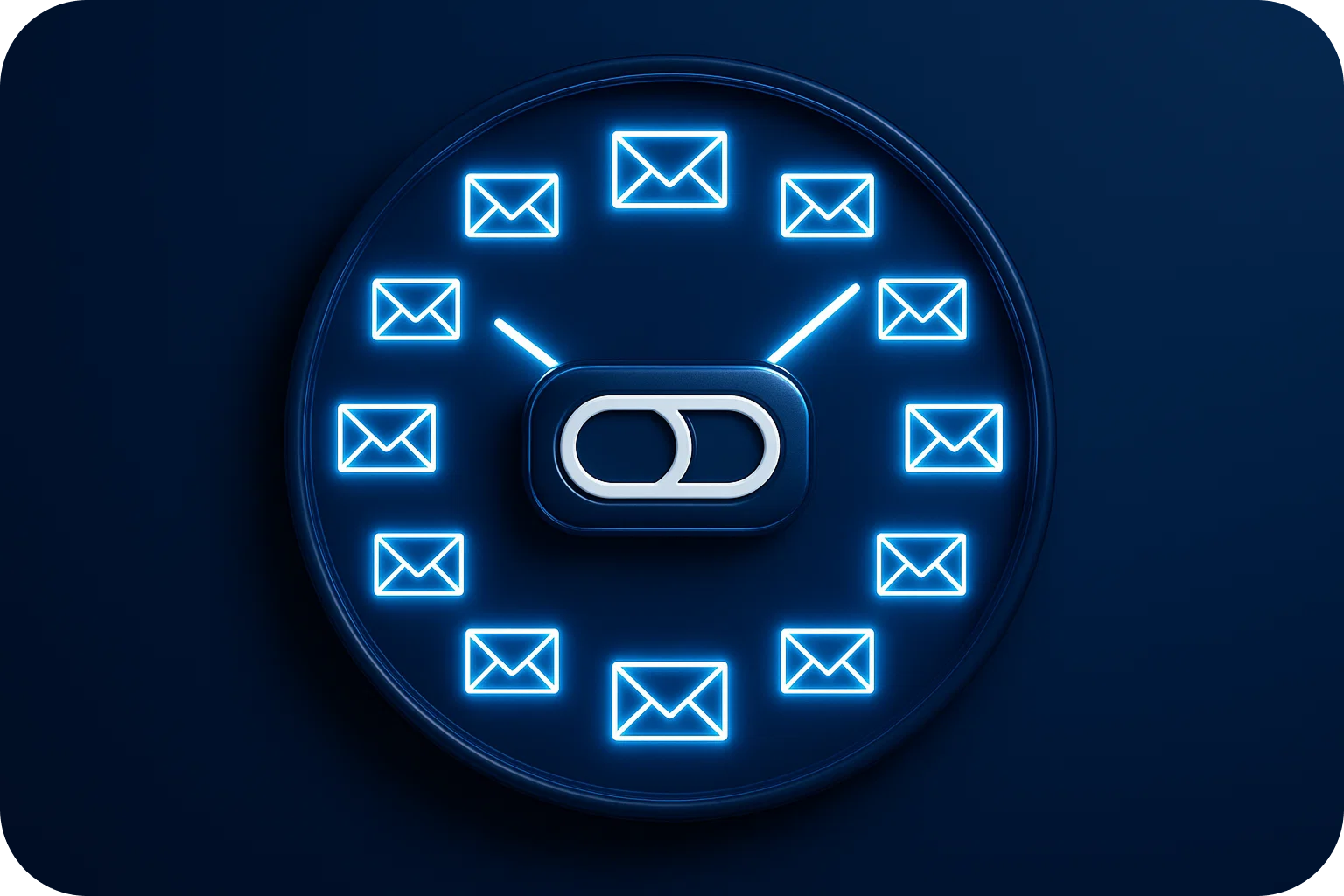The Cold Email Experiment Log: Tracking Tests That Actually Move Metrics
Cold email success isn't about luck; it's about systematic experimentation and rigorous tracking. Yet most teams run tests haphazardly, changing multiple variables at once and wondering why their cold email metrics never improve. The solution? An experiment log that transforms guesswork into data-driven decisions.
Why Most Cold Email Tests Fail
Before diving into tracking methodology, let's address why most cold email experiments produce inconclusive results:
Multiple simultaneous changes make it impossible to identify what actually worked. You change the subject line, CTA, and email length all at once, then can't determine which variable improved your reply rate.
Insufficient sample sizes lead to false conclusions. Testing with 50 emails per variation rarely provides statistical significance, yet teams make sweeping changes based on these limited results.
Inconsistent measurement creates confusion. One team member tracks open rates while another focuses on reply rates, and nobody agrees on what constitutes success.
No documentation means repeating failed experiments. Without a centralized log, your team wastes time testing approaches that have already proved ineffective six months ago.
An experiment log solves all these problems by creating a systematic framework for testing, measuring, and learning from your cold email outreach.
The Essential Components of Your Experiment Log
Your cold email experiment log should capture six critical elements for every test:
1. Hypothesis and Rationale
Document what you're testing and why. A proper hypothesis follows this structure: "If we [change X], then [metric Y] will [increase/decrease] because [reasoning]."
Example: "If we reduce email length from 150 to 75 words, then reply rate will increase because prospects spend less time reading and can respond more quickly."
This clarity prevents aimless testing and helps your team understand the strategic thinking behind each experiment.
2. Test Variables and Controls
Identify exactly one variable to change while keeping everything else constant. Your log should specify:
- Variable being tested: Subject line, email length, CTA placement, personalization level, send time, follow-up sequence
- Control version: The baseline you're comparing against
- Test version: The specific change you're implementing
This discipline ensures clean data. When you see performance metrics shift, you'll know precisely what caused the change.
3. Sample Size and Segmentation
Record the number of emails in each variation and any audience segmentation. Performance metrics vary significantly across industries, company sizes, and seniority levels, your experiment log should capture these distinctions.
Minimum recommended sample sizes:
- 300+ emails per variation for subject line tests
- 500+ emails per variation for email body tests
- 1,000+ emails for send time optimization
Document whether you're testing across your entire list or specific segments like "Series A SaaS founders" or "VP-level healthcare executives."
4. Key Performance Metrics
Track the cold email metrics that matter most to your business objectives. The essential four are:
Deliverability rate: Percentage of emails that reached the inbox (not spam or bounced). This is your foundation; nothing else matters if emails don't arrive.
Open rate: Percentage of delivered emails that were opened. While imperfect due to privacy features, this still indicates subject line effectiveness.
Reply rate: Percentage of delivered emails that received responses. This is typically your north star metric for cold email success.
Positive reply rate: Percentage of replies that show genuine interest (excluding unsubscribes and negative responses). This measures actual business opportunity generation.
Consider tracking secondary performance metrics like:
- Click-through rate (if including links)
- Meeting booking rate
- Time to first reply
- Conversation continuation rate
5. Timeline and Duration
Document when the test started, how long it ran, and when you analyzed the results. Cold email performance metrics fluctuate based on day of week, month, and season; your log should account for these variables.
Run tests long enough to account for natural variation. A minimum of two weeks allows you to capture different days of the week and reduces the impact of random fluctuations.
6. Results and Insights
Record the actual performance metrics alongside your interpretation. What did the data reveal? Were the results statistically significant? What surprised you?
Most importantly, document your decision: Will you implement this change permanently, run a follow-up test, or abandon this approach?
Setting Up Your Experiment Tracking System
You don't need sophisticated software to start tracking cold email experiments effectively. A well-structured spreadsheet works perfectly for most teams.
Spreadsheet Structure
Create columns for each essential component:
| Test ID | Date Started | Hypothesis | Variable Tested | Control | Variation | Sample Size | Deliverability | Open Rate | Reply Rate | Positive Reply Rate | Winner | Insights | Next Steps |
This structure allows you to sort, filter, and analyze your testing history to identify patterns over time.
Advanced Tracking Considerations
As your experimentation program matures, consider adding:
Confidence intervals: Statistical ranges that indicate how reliable your results are. A reply rate of 5% with a ±3% confidence interval is very different from 5% ±0.5%.
Segment performance: Break down results by industry, company size, or seniority to identify which audiences respond best to specific approaches.
Cumulative impact: Track how multiple winning tests compound over time. A 10% improvement in reply rate from five separate tests creates substantial cumulative gains.
Tests Worth Running (And Tracking)
Not all experiments deserve space in your log. Focus on high-impact variables that historically move cold email metrics:
Subject Line Experiments
Test personalization level, length, question vs. statement format, and curiosity vs. clarity approaches. Subject lines directly impact open rates and set expectations for your email content.
Email Length Tests
Compare ultra-short (50-75 words), short (100-125 words), and medium-length (150-200 words) emails. Length significantly affects reply rate, but the optimal length varies by audience and offer complexity.
Personalization Depth
Test minimal personalization (name only) against moderate (name + company + role) and deep personalization (name + specific company insight + relevant context). More personalization generally improves performance metrics, but requires more research time per prospect.
Call-to-Action Variations
Experiment with direct asks ("Are you available Tuesday at 2pm?") versus soft asks ("Would this be worth exploring?") versus question-based CTAs ("How are you currently handling [problem]?"). CTA clarity and friction level dramatically impact reply rates.
Send Time Optimization
Test morning vs. afternoon sends, different days of the week, and timezone considerations. While send time effects are often overstated, they can produce 10-20% improvements in open rates for specific audiences.
Follow-Up Sequence Structure
Compare 2-touch, 3-touch, and 4-touch sequences with varying intervals between messages. Follow-up emails often generate 50-70% of total replies, making sequence optimization crucial.
Analyzing Your Experiment Log for Patterns
The real value of your experiment log emerges over time as you accumulate testing history. Quarterly reviews reveal patterns that individual tests can't show:
Audience-specific preferences: Your SaaS prospects might prefer short, direct emails, while healthcare executives respond better to longer, context-rich messages.
Compound winners: Identify which winning tests work synergistically. Combining your best subject line approach with your best email length might outperform either change individually.
Diminishing returns: Recognize when you've optimized a variable fully. After testing five subject line variations, additional tests might yield minimal improvements, signaling it's time to focus elsewhere.
Seasonal patterns: Performance metrics often shift during holiday periods, quarter-ends, or industry-specific busy seasons. Your log helps you anticipate and account for these fluctuations.
Common Experiment Log Mistakes to Avoid
Even with a tracking system in place, teams make predictable errors:
Stopping tests too early: Declaring a winner after three days rarely provides reliable data. Let tests run their full duration even when early results look promising.
Ignoring statistical significance: A 4.2% reply rate isn't meaningfully better than 3.9% with small sample sizes. Use significance calculators before implementing changes.
Testing vanity metrics: Optimizing for open rates while reply rates decline is counterproductive. Focus on performance metrics that align with business objectives.
Never revisit old tests: Audience preferences evolve. Re-test major variables annually to ensure your approaches remain effective.
From Experiment Log to Systematic Improvement
Your experiment log transforms from a tracking tool into a strategic asset when you:
Share learnings across teams: Sales, marketing, and customer success can all benefit from cold email insights documented in your log.
Build a testing roadmap: Use your log to identify knowledge gaps and prioritize future experiments based on potential impact.
Create team playbooks: Convert proven winners into standard operating procedures that new team members can follow immediately.
Demonstrate ROI: Show leadership how systematic testing improved reply rates from 2% to 5%, translating directly to pipeline growth.
Conclusion
Cold email success comes from treating outreach as an ongoing experiment rather than a set-it-and-forget-it campaign. Your experiment log is the foundation of this approach, transforming scattered tests into systematic learning that consistently improves performance metrics.
Start simple: document your next test with a clear hypothesis, controlled variables, and defined success metrics. As your log grows, so will your understanding of what actually moves the needle for your specific audience.
The teams with the best cold email metrics aren't necessarily the most creative; they're the most disciplined about tracking what works, what doesn't, and why. Your experiment log is how you join them.
More articles
Get started now




%201.png)




.png)
